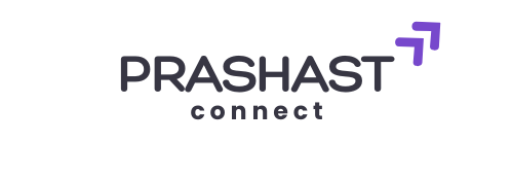Learning Disabilities vs Autism: A Comprehensive Parent and Educator Guide
Learning Disabilities vs Autism: A Comprehensive Guide for Parents and Educators
Navigating the complexities of learning disabilities (LDs) and autism spectrum disorder (ASD) can be overwhelming for parents and educators. These two developmental differences may share surface-level similarities, but they vary significantly in scope, symptoms, and support strategies. This detailed guide sheds light on their key traits, challenges, interventions, and how caregivers and educators can foster growth in diverse learners.
What Are Learning Disabilities?
Learning disabilities are neurologically-based processing disorders that interfere with the ability to acquire academic skills like reading, writing, math, and organizing tasks. Importantly, LDs are not linked to intelligence. Children with LDs often possess average or above-average intellect but face persistent academic hurdles due to how their brains interpret information.
Common types of learning disabilities include:
- Dyslexia: Impacts reading and language decoding.
- Dyscalculia: Affects understanding of numbers and math operations.
- Dysgraphia: Disrupts handwriting and fine motor skills.
These conditions frequently overlap with attention-deficit/hyperactivity disorder (ADHD), further complicating the learning environment. Early diagnosis, Individualized Education Plans (IEPs), and techniques like multisensory instruction are key in supporting such students. With consistent support, children with LDs can thrive academically and socially.
What is Autism Spectrum Disorder (ASD)?
Autism Spectrum Disorder is a developmental condition marked by difficulties in social communication, repetitive behaviors, and highly focused interests. According to the CDC, about 1 in 36 children in the U.S. has ASD. Symptoms typically emerge before age 3 and can vary greatly in severity and presentation.
Key characteristics include:
- Limited or absent eye contact and speech delay
- Need for routines and resistance to change
- Sensory sensitivities (e.g., loud sounds, bright lights)
Children with ASD may excel in specific areas such as music, math, or memory recall. However, social challenges and sensory issues can make both classroom learning and everyday activities difficult. Early interventions like speech therapy, occupational therapy, and Applied Behavior Analysis (ABA) can lead to significant improvements.
Learning Disabilities vs Autism: How Are They Similar and Different?
Though both LDs and ASD impact learning and development, the conditions are fundamentally different in scope:
| Aspect | Learning Disabilities (LDs) | Autism Spectrum Disorder (ASD) |
|---|---|---|
| Focus of Impact | Specific academic areas (e.g., reading, math) | Social interaction, communication, and behavior |
| Diagnosis | Academic testing and cognitive assessments | Behavioral evaluations and developmental screening |
| Support Required | Accommodations and educational strategies | Therapies for social, sensory, and communication skills |
| Comorbidity | Often coexists with ADHD | May co-occur with LDs and intellectual disabilities |
Best Practices for Teaching Children with LDs and Autism
Strategies for Learning Disabilities
- Use multisensory techniques (visual, auditory, tactile)
- Allow for flexible testing (extra time, oral responses)
- Incorporate assistive technologies (text-to-speech, audiobooks)
- Foster self-advocacy and growth mindset
Strategies for Autism
- Use visual schedules and structured routines
- Adapt to sensory preferences (noise-canceling tools, calming corners)
- Integrate social skills training and peer interaction activities
- Customize lessons to student interests for engagement
Explore PRASHAST: A Tool for Early Disability Screening
For educators and parents seeking a reliable method to identify early signs of learning disabilities and autism, PRASHAST offers a comprehensive screening checklist. Developed by NCERT, this tool aligns with the RPwD Act, 2016, and supports early intervention strategies to foster inclusive education.
Building Effective Parent-Educator Partnerships
The success of interventions often hinges on collaboration. Parents bring insight into their child’s personality and behavior at home, while teachers observe academic performance and social interaction. Together, they can design a comprehensive support plan.
Key collaboration tips:
- Hold regular meetings and share progress updates
- Document strategies and revise based on outcomes
- Engage with support groups and local advocacy centers
- Promote inclusive classroom practices and anti-stigma education
FAQs: Quick Answers to Common Parent Questions
Q1: Can a child have both autism and a learning disability?
Yes. Co-occurrence is common. A child may be diagnosed with autism and also have dyslexia, ADHD, or other learning challenges.
Q2: How early can these conditions be diagnosed?
Autism can often be diagnosed by age 2-3. Learning disabilities are usually identified during the early school years, once academic performance can be assessed.
Q3: Is it possible for children with LDs or autism to attend mainstream schools?
Absolutely. With proper accommodations, IEPs, and supportive staff, many children with LDs or ASD succeed in inclusive settings.
Q4: What role do parents play in interventions?
Parents are central. They ensure consistency at home, advocate for services, and collaborate with educators to meet their child’s needs holistically.
Q5: Are there therapies that work for both LDs and ASD?
Some interventions like occupational therapy, speech therapy, and social skills training may overlap and benefit children across both conditions.
Conclusion
Recognizing the distinct yet sometimes overlapping nature of learning disabilities and autism helps pave the way for meaningful support. Empowering children with these conditions starts with understanding, accepting, and adapting. Together—parents, educators, and communities—we can create pathways for every child to thrive.
Learn more tools, checklists, and expert guides at Prashast.org.



